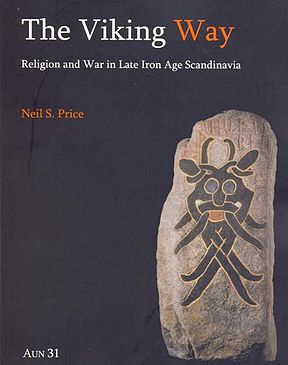- Overview
-
Magic, sorcery and witchcraft are among the most common themes of the great medieval Icelandic sagas and poems, the problematic yet vital sources that provide our primary textual evidence for the Viking Age that they claim to describe. Yet despite the consistency of this picture, surprisingly little archaeological or historical research has been done to explore what this may really have meant to the men and women of the time.
The first edition of the book examined the evidence for Old Norse sorcery, looking at its meaning and function, practice and practitioners, and the complicated constructions of gender and sexual identity with which these were underpinned. Combining strong elements of eroticism and aggression, sorcery appeared as a fundamental domain of women's power, linking them with the gods, the dead and the future. Their battle spells and combat rituals complemented the men's physical acts of fighting, in a supernatural empowerment of the Viking way of life. What emerged was a fundamentally new image of the world in which the Vikings understood themselves to move, in which magic and its implications permeated every aspect of a society permanently geared for war.
Incorporating the new research of the last eight years, the second edition is not only completely updated but also enlarged by approximately a third, and includes a number of reconstructions of new burial finds.
The new edition is under contract to Oxbow Books, and appeared in 2012.
In this fully-revised and expanded second edition, Neil Price takes us with him on a tour through the sights and sounds of this undiscovered country, meeting its human and otherworldly inhabitants, including the Sámi with whom the Norse partly shared this mental landscape. On the way we explore Viking notions of the mind and soul, the fluidity of the boundaries that they drew between humans and animals, and the immense variety of their spiritual beliefs. We find magic in the Vikings' bedrooms and on their battlefields, and we meet the sorcerers themselves through their remarkable burials and the tools of their trade. Combining archaeology, history and literary scholarship with extensive studies of Germanic and circumpolar religion, this multi-award-winning book shows us the Vikings as we have never seen them before.
from the Oxbow website
- Critical Reaction to "The Viking Way" (1st Edition)
-
- "One of the most important contributions to Viking studies in recent years, quite possibly in recent decades … an exceptional book … essential reading" Dr. Matthew Townend, Antiquity
- "This will be the starting point for any discussion of early northern religion from now on … this book is about to become famous … it is the sense of being invited back-stage in history to discover not magic realism, but the reality behind the magic."
Professor Martin Carver, Fornvännen - "Takes the reader on an exciting journey … anyone reading Price's book will never again be able to romanticise the Vikings and their time … here the terror and madness of the Viking Age Odin cult and its war-fixation emerge unvarnished … a book that is going to be debated for a long time to come." Professor Gro Steinsland, Collegium Medievale
- "A big, packed, inspirational book … one of those that moves archaeology forwards, gives it nourishment and opens new avenues."
Professor Else Roesdahl, Kuml - "This refreshing, thoroughly researched and inspirational book sheds exciting new light on the Viking Age. I am already recommending it to all my students."
Dr. Terry Gunnell, University of Iceland - "A fresh and stimulating analysis which unites archaeology and ethnography and makes excellent use of both."
Professor Richard Bradley, University of Reading - "A ground-breaking work of research in archaeology and the humanities, with an impact that will be felt for many years … it has turned our view of this period upside down."
Professor Helle Vandkilde, University of Aarhus
In Sweden the book has received prizes from the Royal Academy of Letters, History and Antiquities and the Royal Gustav Adolf Academy.
In 2005 the author was awarded the King Oscar II Prize from Uppsala University.

